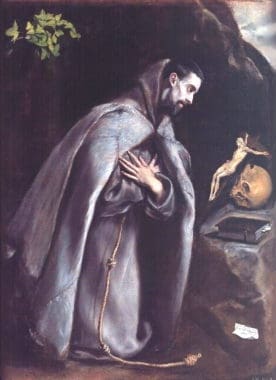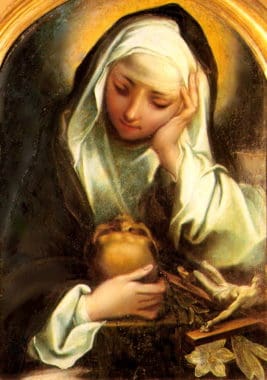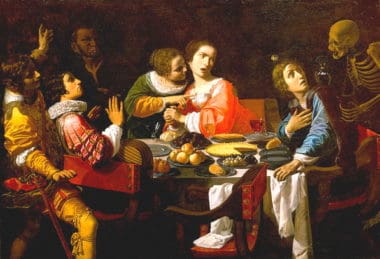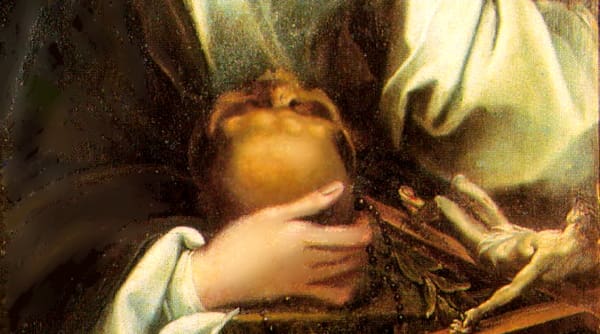Why are saints sometimes pictured with skulls?
Does that mean they are preoccupied with death? There sure seems to be an awful lot of that in old art. God bless you and your ministry.
 Yes, indeed, skulls make frequent appearances in Christian art, even today. I can understand your question about this practice; because, putting skulls everywhere can seem kind of morbid – especially for those of us who live in a secular, consumer society which systematically avoids thinking about the deeper truths like death and what happens after death.
Yes, indeed, skulls make frequent appearances in Christian art, even today. I can understand your question about this practice; because, putting skulls everywhere can seem kind of morbid – especially for those of us who live in a secular, consumer society which systematically avoids thinking about the deeper truths like death and what happens after death.
A Healthy Skull
When Christian art depicts skulls near a saint, it symbolizes the saint’s wisdom and prudence. The skull represents, vividly and compellingly, human mortality. We are all going to die, and death may come at any time. Keeping this fundamental truth in mind helps us live each day more meaningfully. Instead of storing up riches and over-indulging in pleasures, we choose to live for the mission Christ has given us, for spreading his Kingdom and deepening our relationship with God. That Kingdom and that relationship will endure beyond death, so investing in them is the wise thing to do. The saints have their priorities straight. They are living “in the light of eternity”, as an ancient phrase puts it. The skull, far from indicating a morbid preoccupation with death, is a symbol of the wisdom that comes from living in the light of the truths that Jesus revealed to us; it helps us live each day to the full because it reminds us of the bigger picture.

Wisdom in Action
Memento Mori
 In our tradition of Catholic spirituality, these types of practices are referred to as memento mori, a Latin phrase that means “remembrance of death” or “remembrance of mortality.” The practice of receiving ashes on Ash Wednesday is one of these. And, in general, taking time to reflect on our mortality has proven to be a powerful and healthy impetus for spiritual growth. St. Ignatius of Loyola’s Spiritual Exercises include a meditation on death as a central contemplation during the First Week. And every time we pray the Hail Mary, we finish with a prayer that reminds us that our earthly journey will indeed come to an end, sooner or later.
In our tradition of Catholic spirituality, these types of practices are referred to as memento mori, a Latin phrase that means “remembrance of death” or “remembrance of mortality.” The practice of receiving ashes on Ash Wednesday is one of these. And, in general, taking time to reflect on our mortality has proven to be a powerful and healthy impetus for spiritual growth. St. Ignatius of Loyola’s Spiritual Exercises include a meditation on death as a central contemplation during the First Week. And every time we pray the Hail Mary, we finish with a prayer that reminds us that our earthly journey will indeed come to an end, sooner or later.
I thank you for your question because it has given all of us an opportunity to reflect on one of the realities that can help inoculate us against some of the secularist sicknesses polluting our present culture.
In Him, Fr John
+
Art for this post on why saints are sometimes pictured with skulls: Detail of San Francisco Meditando de Rodillas (Saint Francis Meditating on His Knees), El Greco, Ca. 1586-1592; Partial restoration detail of Saint Catherine of Siena, Francesco Vanni, 17th century; Death Comes to the Banquet Table (Memento Mori), Giovanni Martinelli, circa 1635; all PD-US author’s life plus 100 years or less; all Wikimedia Commons.


